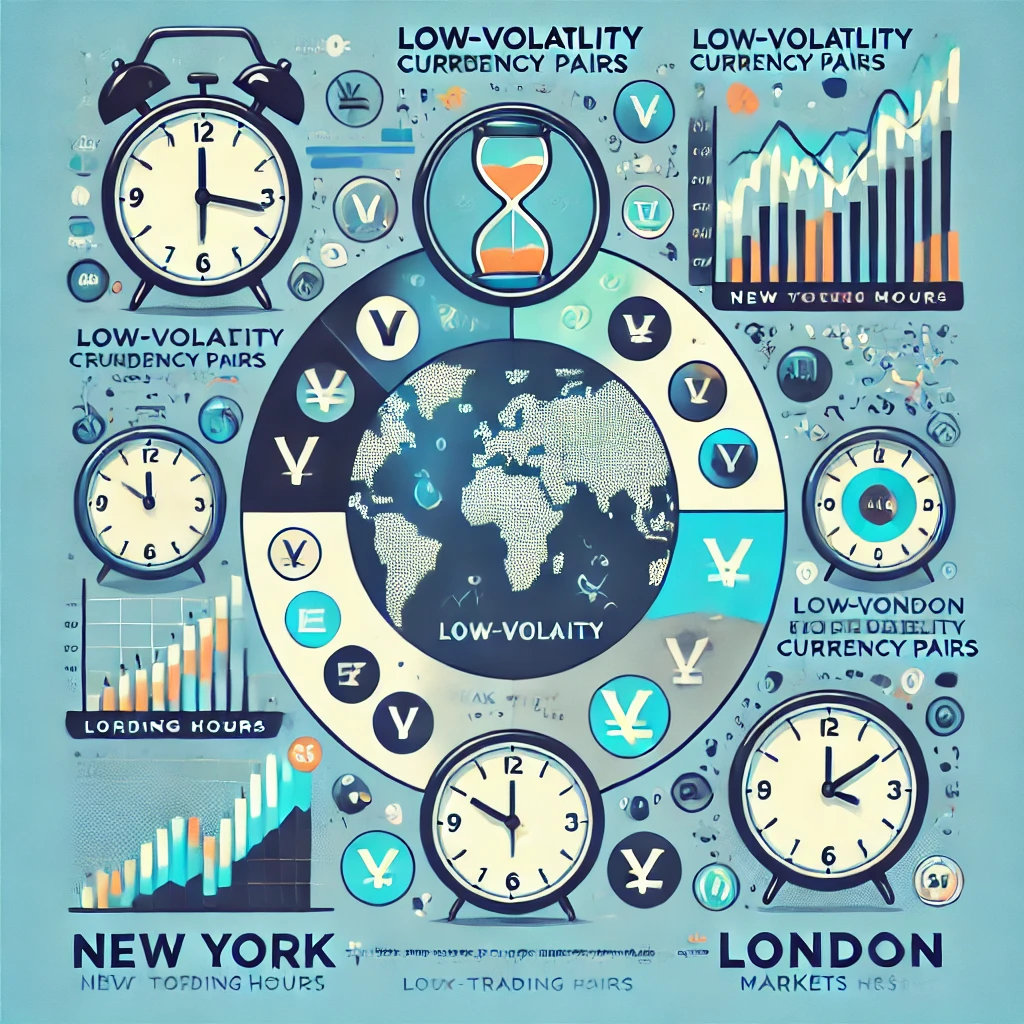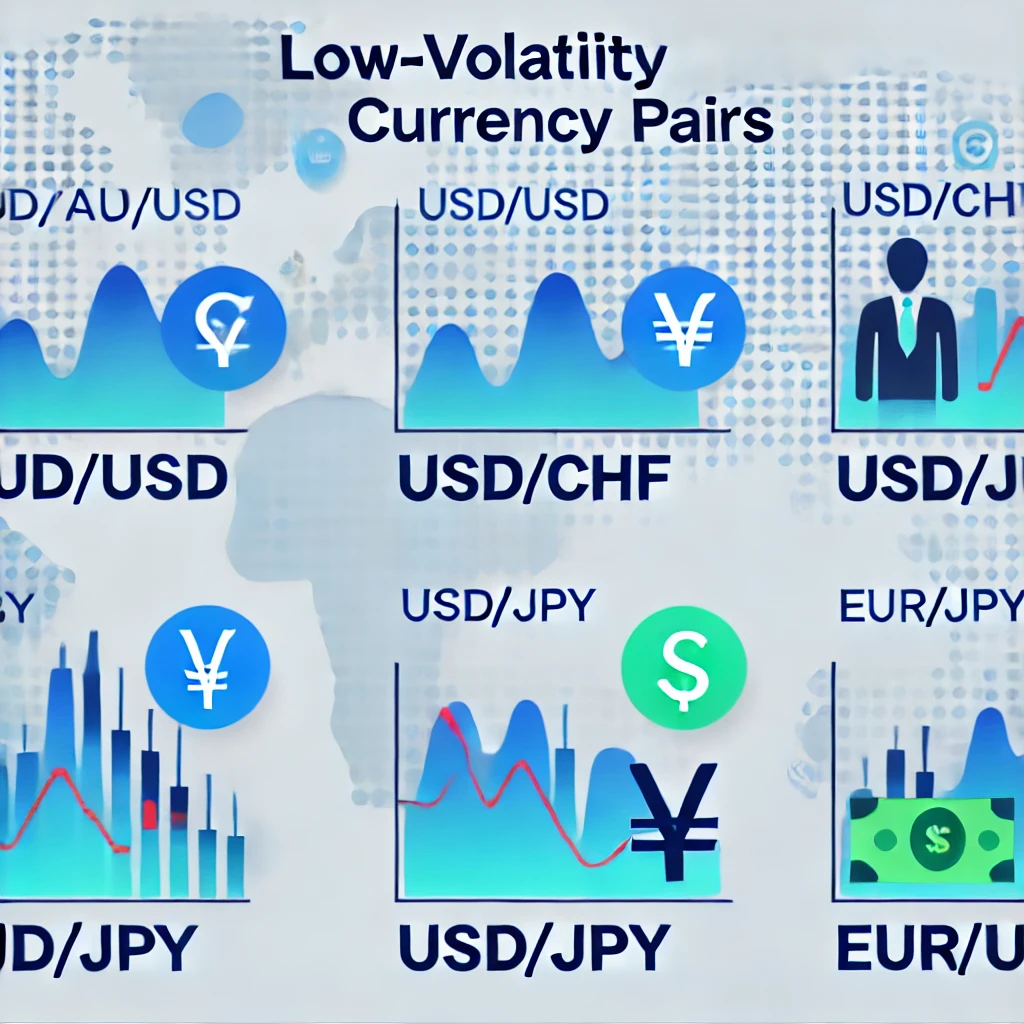Table of Contents
- Why Low Volatility Currency Pairs Are Valuable
- What Are Low Volatility Currency Pairs?
- How to Measure Volatility in Forex
- Key Low Volatility Currency Pairs
- The Importance of Liquidity in Stable Trading
- Benefits of Trading Stable Currency Pairs
- Why Choose Low-Volatility Pairs?
- Best Times to Trade Low-Volatility Pairs
- How to Use Low-Volatility Pairs in Your Trading Plan
- Risk Management with Low Volatility Pairs
- Conclusion

Why Low Volatility Currency Pairs Are Valuable
In an unpredictable forex market, low-volatility currency pairs provide stability. These pairs help traders manage risk and protect their investments. Many traders use these pairs to achieve steady results without the stress of rapid market changes.
Unlike high-volatility pairs that respond quickly to news and global events, low-volatility pairs move at a slower and steadier pace. This makes them a good choice for traders who want consistent gains. These pairs are usually less affected by sudden economic or political changes, making trading smoother and more predictable.
Low-volatility currency pairs serve as a strong base for trading strategies aimed at long-term success. Let’s look at why these pairs are reliable and how they can help you reach your trading goals.
What Are Low Volatility Currency Pairs?

Low-volatility currency pairs are pairs that don’t experience big price changes. Their values shift slowly and steadily. Common examples include EUR/CHF (Euro/Swiss Franc), EUR/USD (Euro/U.S. Dollar), and USD/CHF (U.S. Dollar/Swiss Franc). Many traders prefer these pairs for their stability and more predictable results.
If you’re new to forex, check out this guide on popular forex pairs for beginners to learn more about your options.
Volatility is a key factor in forex trading, especially for those looking for a more stable approach. Knowing what volatility is, what causes it, and how to measure it can help traders make better decisions.
What Is Currency Pair Volatility?
In forex, volatility shows how much a currency pair’s price moves over time. If a pair has high volatility, it means prices change a lot and quickly. Low volatility, on the other hand, means prices move slowly and stay steady.
Volatility matters because it tells traders about both the possible risks and rewards. Traders who like low-volatility pairs usually aim to lower their risk by going for smaller, steady gains instead of big, rapid changes. This approach helps them plan for more consistent results, making low-volatility pairs a popular choice for long-term strategies.
What Causes Volatility in Forex?
Several factors can impact how much a currency pair’s price changes. Here are some of the main ones:
- Economic Data: Reports like employment numbers, inflation rates, and GDP growth show how well a country’s economy is doing. Strong economic data can boost a currency’s value, while weak data may cause it to drop. For example, if U.S. job numbers are higher than expected, the USD might strengthen, increasing volatility.
- Central Bank Decisions: Central banks, such as the Federal Reserve or European Central Bank, set interest rates and policies that affect currency values. When interest rates go up, a currency often becomes more attractive, raising its demand and price. Big announcements from central banks can lead to sharp price changes in the forex market.
- Political Events: Changes in government, elections, or international tensions can create uncertainty and cause currency prices to shift. For example, news about trade deals, sanctions, or diplomatic conflicts often adds volatility to the market.
- Market Sentiment: How traders feel about the market also influences volatility. If investors feel optimistic, they may buy more of a currency, pushing its price up. If they’re worried about economic downturns or global issues, they might sell off riskier currencies, causing prices to drop.
By keeping an eye on these factors, traders can predict possible changes in volatility and adjust their strategies. For instance, if traders want to avoid high volatility, they might choose not to trade during major central bank announcements.
How to Measure Volatility in Forex
Measuring Volatility: Average True Range (ATR)
Key Low Volatility Currency Pairs
Low-volatility pairs, like AUD/USD, USD/CHF, USD/JPY, EUR/USD, and USD/CAD, are good options for safe trading. These pairs come from countries with strong economies and stable financial systems, which means they are less affected by sudden global changes.
The Importance of Liquidity in Stable Trading
Liquidity is very important for keeping currency prices stable. In a market with high liquidity, there are many buyers and sellers. This helps keep prices steady, even when large trades happen. As a result, trading becomes more predictable and reduces big price swings.
Liquidity and Price Changes
In markets with high liquidity, large trades do not cause big price jumps. This stability is attractive to traders who want a more reliable trading environment.
Why Choose Low-Volatility Pairs?
Low-volatility currency pairs are ideal for traders wanting stability and lower risk. These pairs, like EUR/CHF and USD/CHF, have smaller price swings and move at a steady pace. This makes them great for traders focused on consistent, long-term gains.
- Lower Risk: With fewer big jumps, these pairs carry less risk, making them suitable for beginners and budget-conscious traders.
- Steady Earnings: Low-volatility pairs often provide reliable returns, perfect for long-term strategies.
- Calm Trading: Fewer sharp changes create a more relaxed trading environment.
Learn more about stable trading with this guide to low-volatility forex pairs.
Best Times to Trade Low-Volatility Pairs
The best time to trade low-volatility pairs is when the New York and London markets are both open, as this is when trading activity is highest. However, if you prefer less price movement, trading outside of these busy hours can also work well. For more tips on timing your trades, take a look at this market hours guide.
How to Use Low-Volatility Pairs in Your Trading Plan

Risk Management with Low Volatility Pairs
Conclusion
Low-volatility currency pairs are ideal for traders seeking a stable and predictable trading experience. With a clear plan and patience, you can gradually grow your account. These pairs may not offer the thrill of high-volatility trades, but with the right approach, they can help you build a solid, profitable strategy.
